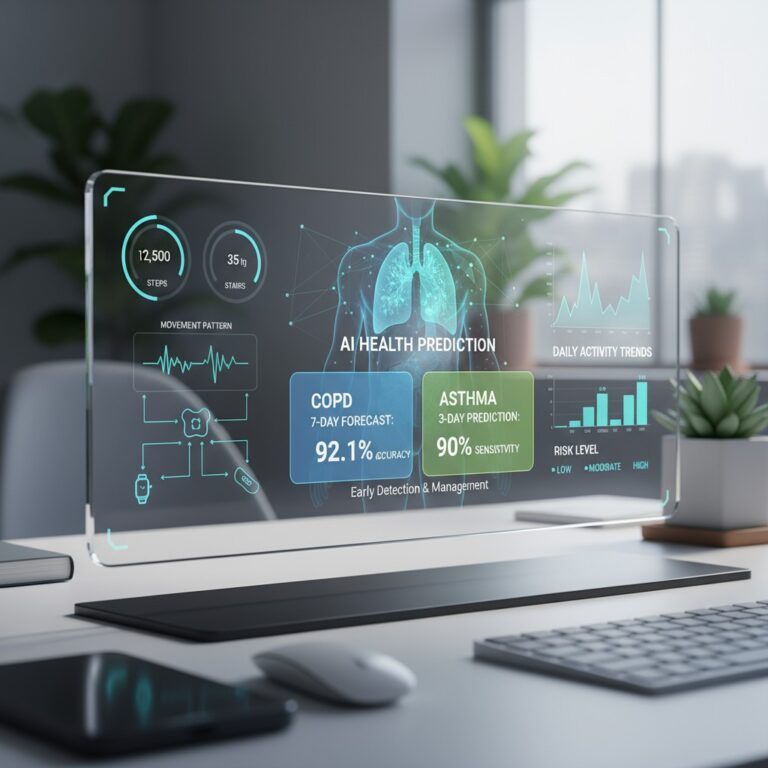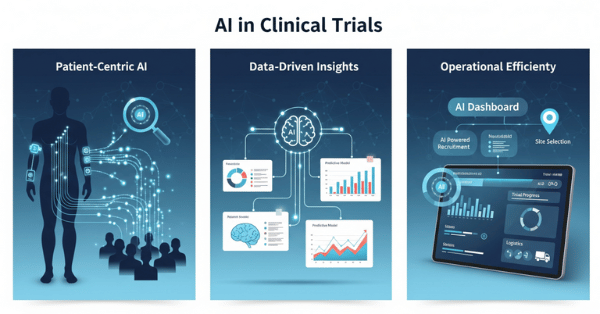The Elsa Revolution: Inside the FDA’s AI Game-Changer
In the world of life sciences, change often comes in the form of a new molecule or a breakthrough clinical trial. But in June 2025, the U.S. Food and Drug Administration (FDA) quietly launched a revolution of a different kind: an internal generative artificial intelligence tool named Elsa. This isn’t just another software update; it’s a seismic shift in how the agency operates, and its shockwaves are set to reshape the entire pharmaceutical and biotech landscape.

Powered by the same kind of large language models (LLMs) that have captured the public imagination, Elsa is the FDA’s new secret weapon for tackling its most document-heavy tasks. But what is it, really? And what does it mean for an industry that interacts with the agency every single day?
At its heart, the launch of FDA Elsa is the agency’s answer to a storm of mounting pressures: an ever-growing mountain of submission data, tightening resources, and a clear mandate to get smarter and faster for the sake of public health. By teaching a machine to read, summarize, and analyze everything from clinical trial protocols to adverse event reports, the FDA hopes to free its human experts to do what they do best: exercise critical scientific judgment.
For the life sciences industry, the implications are profound. Even though Elsa is a tool for the FDA’s eyes only, its existence creates a powerful new incentive for companies to craft their regulatory submissions with unprecedented clarity. A new, unwritten standard of “AI-ready” documentation is emerging, where the clearest, most well-structured submissions may gain a competitive edge through faster review cycles.
Of course, the road ahead isn’t without its bumps. The technology has its limits, including the potential for AI “hallucinations,” and its rollout has raised questions about governance and trust that the agency must address. Success will depend not just on the sophistication of the AI, but on the strength of the human oversight guiding it.
This is the story of FDA Elsa—a look under the hood at the technology, its purpose, and the strategic preparations the industry must consider to navigate this new era of AI-driven regulatory science.
Why Now? The Perfect Storm That Created Elsa
The arrival of FDA Elsa wasn’t a sudden whim. It was a calculated response to a set of challenges that have been straining the FDA’s traditional way of doing business for years. Think of it as a perfect storm of data, deadlines, and a demand for digital-age solutions.
First, there’s the sheer volume of information. For decades, the FDA has been facing a data deluge. Every new drug, device, and clinical trial comes with a mountain of paperwork, from highly structured lab results to dense, narrative-heavy reports. The old way of doing things—manual, page-by-page review—was fast becoming unsustainable, threatening to create bottlenecks that could delay vital new medicines from reaching patients.
At the same time, the FDA has been on a public mission to modernize, aiming to become a more “AI-native” organization. This isn’t just about chasing trends; it’s about using technology to better protect public health by making regulatory processes faster and more intelligent. This push is made all the more urgent by real-world pressures like budget constraints and staffing limits, which demand new ways to maintain high performance.
Finally, there’s the constant pressure to be more efficient. For both the FDA and the industry, the time it takes to get a new product reviewed is a critical factor. Elsa was designed to attack this problem head-on. By automating the more repetitive, administrative parts of a review—like summarizing a report or cross-referencing documents—Elsa frees up the agency’s brilliant scientists to focus on the complex analysis and judgment that only a human can provide. The goal is to turn tasks that once took days into work that takes minutes, speeding up the entire journey from submission to approval.
Under the Hood: What Makes Elsa Tick?
To understand Elsa’s impact, you have to understand what it is and what it can do. It’s more than just a search bar; it’s a sophisticated assistant built with both power and security in mind.
The journey to create Elsa was driven by a clear set of strategic goals. The FDA needed a tool that could accelerate the review of critical documents like clinical trial protocols, help the agency manage its ever-increasing workload, and enhance safety oversight by quickly flagging high-priority inspection targets or potential risks in adverse event reports. Ultimately, the goal was to boost the agency’s overall operational efficiency by letting technology handle the grunt work, freeing up people for the brain work.
The engine driving Elsa is a powerful generative AI, built on large language models (LLMs). But for a tool handling some of the most sensitive data in the world, security is paramount. That’s why the entire system lives in a high-security
AWS GovCloud environment—a kind of digital fortress designed specifically for government agencies to ensure data stays private and contained. The system is also offline and compartmentalized, meaning there’s no path for information to leak out to the wider internet.
Perhaps the most important rule governing Elsa is one designed to build trust with the industry: Elsa is never, ever trained on confidential data submitted by sponsors. This creates a critical firewall, ensuring a company’s trade secrets and intellectual property remain protected and are not used to inform the review of a competitor’s product.
So, what can an FDA reviewer actually do with Elsa? The tool is a multi-talented assistant, capable of:
- Summarizing Adverse Events: Instead of manually sifting through thousands of reports, a reviewer can ask Elsa to process and summarize them, making it easier to spot potential safety signals that need a closer look.
- Comparing Product Labels: The painstaking task of comparing a new generic drug’s label to the original can be automated, streamlining the process and ensuring accuracy.
- Analyzing Clinical Protocols: Elsa can read a study protocol and quickly help a reviewer understand its design, identify potential issues, and check for consistency with guidelines.
- Prioritizing Inspections: By analyzing different data streams, Elsa can help the agency identify risk signals in real-time, allowing it to send its limited number of investigators to the sites that need attention most urgently.
- Generating Code: In a surprisingly versatile twist, Elsa can even write scripts in programming languages like Python or R, helping FDA staff build their own small databases or tools to manage data more effectively.
- Automating Research: For tasks like pharmacovigilance, Elsa can help with the automated review of scientific literature or the initial intake of safety cases, cutting down on manual work and speeding up response times.
A Day in the Life with FDA Elsa

The Human Element: Who Uses Elsa and Why?
While the technology is cutting-edge, Elsa’s success ultimately comes down to people. Its value is measured by how it empowers its users and benefits the FDA as a whole.
First, let’s be crystal clear about who gets to use it. FDA Elsa is a proprietary, internal tool, built for and used exclusively by FDA employees. It is not available for pharmaceutical companies, research organizations, or the public to download, license, or use in any way.
The intended users within the agency are a diverse group, a testament to the tool’s versatility. It’s designed to help scientific reviewers who evaluate new drugs, investigators who inspect manufacturing facilities, and compliance staff who manage a wide array of regulatory activities. In short, any FDA employee whose job involves wading through dense documents is a potential Elsa user.
Interestingly, the FDA isn’t forcing the tool on its staff. The rollout is being driven by a more organic, culture-focused approach. Use of Elsa is voluntary, and the agency is relying on internal “Elsa champions” to spread the word and show their colleagues how it can help. This strategy is aimed at building genuine trust and allowing people to adopt the technology at their own pace.
For the agency, the value proposition is enormous. The most obvious win is a massive boost in efficiency and speed. By automating text-heavy tasks, Elsa can shrink review activities that once took days into a matter of minutes. This leads to greater
accuracy and better prioritization, as the AI can help consistently spot important safety signals or discrepancies, allowing reviewers to focus on the most critical issues first.
Over time, this fosters standardization, as a single, powerful tool helps ensure documents are assessed with greater consistency across different divisions. And in a world of limited budgets, Elsa acts as a force multiplier, allowing the agency to optimize its resources and make smarter, data-driven decisions about where to focus its oversight.
The Ripple Effect: How an Internal Tool Will Reshape an Entire Industry
Even though Elsa operates behind the FDA’s firewall, its impact will be felt far and wide. Like a stone dropped in a pond, this internal tool will create ripples that will change the strategic calculations for every company in the life sciences sector. The key is to understand that the industry will be affected not by using Elsa, but by how Elsa changes the FDA.
The most hoped-for outcome is the acceleration of regulatory timelines. If Elsa can help speed up the review of clinical trial protocols or make safety evaluations more efficient, it could shorten the entire drug development lifecycle. For an industry where every day saved is worth millions and means getting therapies to patients sooner, this is a game-changing prospect.
Perhaps the most profound impact, however, will be the rise of a new, unspoken standard: the “AI-ready” submission. Large language models are powerful, but they work best with high-quality input. A document that is clearly written, well-structured, and uses consistent language is far easier for an AI to understand than one that is ambiguous or disorganized.
This simple fact will create a new competitive landscape. A company that submits a dossier of exceptionally clear narrative documents will make the FDA reviewer’s job easier, likely resulting in a faster review. A poorly written submission, on the other hand, might confuse the AI, forcing the human reviewer to fall back on the slow, manual process and potentially leading to delays.
While the FDA hasn’t issued official rules for “AI-friendly” writing, the operational reality will create a powerful incentive for the industry to self-regulate. Companies that invest in a culture of clarity, structured authoring, and consistent terminology will likely gain a significant edge. This could even create a new cottage industry of consultants and software vendors specializing in “Regulatory AI Optimization,” helping companies craft submissions perfectly tailored for a machine-assisted review.
Elsa also stands to revolutionize pharmacovigilance. Its ability to quickly digest huge volumes of adverse event data could allow for a more dynamic and near-real-time approach to safety monitoring, enabling the FDA to spot and act on safety signals faster than ever before. This enhanced oversight could also affect pathways that rely on public data, like the GRAS (Generally Recognized as Safe) process for food ingredients, as the agency will have a much greater capacity to continuously monitor safety evidence on its own.
Finally, the FDA’s careful approach is setting a precedent. By building Elsa in a secure environment, forbidding training on sponsor data, and keeping a human in the loop, the agency is creating a blueprint for how to responsibly use AI in a highly regulated space. This could give other companies the confidence to explore similar AI tools for their own internal processes, from drug discovery to manufacturing.
A Dose of Reality: Navigating the Risks and Roadblocks
For all its promise, FDA Elsa is not a magic bullet. Its successful integration depends on navigating some very real risks, limitations, and governance challenges. A clear-eyed view of these hurdles is essential.
The biggest technical risk is the one that plagues all current large language models: the potential for inaccuracy and “hallucinations.” Reports have already surfaced of Elsa generating information that sounds confident but is factually wrong, including making up citations. In a regulatory setting where precision can be a matter of life and death, this is a serious concern. An incorrect AI summary could cause a reviewer to miss a critical safety issue. This is why keeping a knowledgeable human in the loop is not just a good idea—it’s an absolute necessity.
There are also human challenges to overcome. The deployment of any new technology in a large, scientific organization is bound to face some skepticism. Some FDA staff have reportedly worried that the rollout of Elsa was too fast, creating risks before all the safeguards were in place. Building trust among the very people who are supposed to use the tool is a critical step. If reviewers don’t trust Elsa, they won’t use it, and its potential benefits will never be realized.
Finally, there are still some unanswered questions about governance. The public and the industry still lack a clear picture of how Elsa’s performance is measured, how its outputs are audited, and how the model is corrected when it makes a mistake. This lack of transparency can undermine confidence.
Ultimately, the long-term success of Elsa hinges more on trust than on technology. If FDA reviewers don’t trust its outputs, they’ll spend just as much time double-checking the AI’s work as they would have spent doing the task manually, erasing any efficiency gains. If the industry feels the review process is being driven by a flawed or opaque black box, it will erode faith in the FDA’s decisions. The agency’s ability to be transparent about how it validates the tool and manages its flaws will be the true test of this AI revolution.
How to Prepare for the Elsa Era: An Industry Guide
For professionals in the life sciences, the question isn’t “How can I use Elsa?” but “How do I adapt to a world where the FDA uses Elsa?” The answer lies in a proactive strategy focused on quality, awareness, and adopting a new way of thinking.
First, let’s reiterate the reality of access. FDA Elsa is an internal-only tool. It is not public, it is not for sale, and it is not available for license. It lives exclusively within the FDA’s secure systems. Any strategy based on getting your hands on the software is a non-starter. The focus must be on preparing for its indirect effects.
So, what can you do?
- Master Your Documents: The single most important preparation is to elevate the quality of your narrative documents. This means investing in clarity, consistency, and structure. Think of every document you write as something that will be read first by a machine.
- Think Like an AI-Powered Reviewer: Evolve your internal review process. Don’t just check for scientific accuracy; check for machine-readability. Hunt down and eliminate ambiguity, inconsistent terms, and convoluted sentences that could trip up an AI.
- Use Proxy Technologies: While you can’t use Elsa, you can use other tools to get a sense of how your documents might be processed. Consider using commercially available, secure LLM platforms internally to pre-screen your own narratives for clarity, catching potential problems before the FDA does.
- Become an Information Sponge: Staying informed is critical. Assign people to monitor all available channels for news about Elsa and the FDA’s modernization efforts. This includes:
Your “AI-Ready” Submission Checklist

Conclusion: A New Dawn for Regulatory Science
The launch of FDA Elsa is more than just a technological milestone; it’s the dawn of a new era of AI-augmented regulatory science. It signals a clear move away from the old, manual-intensive ways of working and toward a future where human expertise is amplified by machine intelligence. While Elsa itself is an internal tool, its influence will be felt across the entire life sciences ecosystem, forcing a necessary and powerful evolution.
This new reality presents both a challenge and an opportunity. The industry is now compelled to strive for a new level of excellence in the clarity and quality of its written submissions. The companies that embrace this, investing in the people and processes needed to produce impeccably clear documents, will be the ones who thrive. The idea of an “AI-ready” submission is quickly moving from a nice-to-have to a must-have.
The path forward will require navigating the very real risks of AI fallibility and building a foundation of trust through transparency and strong governance. But the promise is immense.
Ultimately, FDA Elsa should be seen not as a replacement for human regulators, but as a powerful new partner in their work. It represents a new model of human-AI collaboration in the service of public health—one that promises greater speed, deeper insight, and smarter oversight. The Elsa revolution has begun, and the industry must be ready to adapt.






